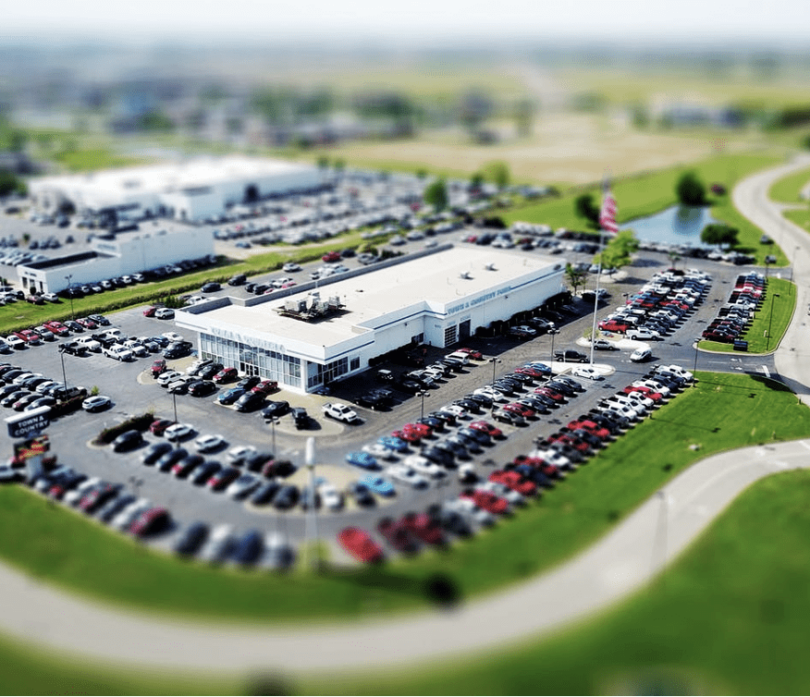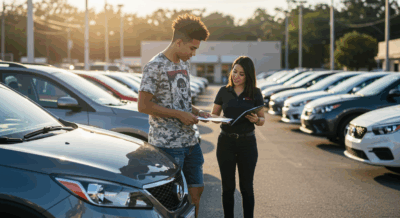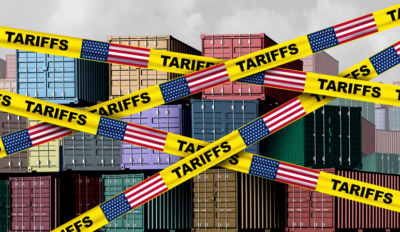Automotive Solutions Dealers Need to Boost Sales

At eLEND Solutions, an automotive fin-tech pioneer, our goal is to help dealers sell more cars in less time. In this blog, we’ve compiled actionable strategies and tools for your dealership, designed to refine customer experiences, boost sales performance, and drive continual growth within a competitive market.
Navigating through all the available automotive solutions and technologies is a bit like exploring different routes in a maze. All dealer solutions can add value but it’s important for dealerships to choose the right solutions that align with their specific needs and capabilities.
Before considering any investment in advanced dealer solutions mentioned further in this blog, we strongly suggest you start by taking a brutally honest, eyes-wide-open look at your current processes and workflows from all angles to ensure everything is optimized to provide the ideal buying experience for your customers. In other words, inspect what you expect.
In this article
- 0.1 Customer Engagement Analysis
- 0.2 Website Analytics
- 0.3 Customer Surveys
- 0.4 Mystery Shopping
- 0.5 CRM Data Analysis
- 0.6 Social Media Monitoring
- 0.7 A/B Testing
- 0.8 Benchmarking
- 0.9 Ready, Set… Sell!
- 1 Understanding the Power of AI-Driven Automotive Solutions
- 2 Digital Retailing Automotive Solutions for Your Unique Dealership
- 3 Other Types of Automotive Solutions for Dealers
- 4 Start Relying on Transformative Automotive Solutions Today
Customer Engagement Analysis

Check how effective your online and in-store experiences are. Here are actionable strategies to help you evaluate and enhance these vital aspects of your dealership and ongoing dealership solutions:
Website Analytics
Understanding your online audience is key. Dive into tools like Google Analytics to unpack a goldmine of insights. Explore the listed sections and metrics to discover valuable user behavior patterns:
- Visitor demographics;
- Popular pages;
- The path users take on your website;
- Bounce rates;
- Session duration;
- Conversion rates.
Additionally, consider asking your website provider:
- “Can we analyze the user journey on our website to identify any specific pages or sections where visitors tend to drop off or spend less time? Are there insights into visitor behavior that could suggest areas needing improvement?”
- “How customizable are the call-to-action (CTA) buttons and forms on our website? Are there ways to optimize these elements for better engagement or to align with changing customer behaviors?”
These questions can offer a comprehensive view to enhance your customer engagement and boost conversions both online and in-store.
Customer Surveys
Nothing beats direct feedback. Customer Satisfaction Surveys are designed to provide dealerships and manufacturers with insights into the customer’s experience, helping them identify areas of strength and opportunities for improvement. The feedback is crucial for maintaining high standards of customer service and for making strategic decisions to enhance customer satisfaction.
It goes without saying that these surveys are a fundamental automotive solution. Leveraging this feedback not only fulfills requirements but also provides insights that align with broader dealership goals, ensuring customer satisfaction, financial benefits, improved allocation of inventory access to better financing rates, and additional marketing and advertising support.
Given their importance, many dealerships and manufacturers invest significant resources into designing effective surveys, analyzing the results, and implementing changes based on the feedback received.
Mystery Shopping

Mystery shopping can be a powerful tool for understanding the customer experience from an outsider’s perspective and identifying areas for improvement at your dealership. There are professional mystery shopping companies that specialize in providing these services.
They are trained to objectively evaluate the customer experience at your dealership, online and in-store. Work with the mystery shopping provider to create scenarios that mimic typical customer interactions.
These scenarios can be tailored to assess specific aspects of your dealership’s operations, including sales and service departments, as well as current dealership solutions in place. Examples include:
- Evaluate the sales process and salesperson’s knowledge and professionalism.
- Assess the quality of a service department visit, wait times, and staff communication.
- Evaluate the responsiveness and effectiveness of the online inquiry process.
- Assess how effectively and efficiently your website handles online financing pre-approval process and other financing inquiries
- Assess the effectiveness of the transition from online engagement to an in-person dealership experience. Is there continuity?
- Understand the efficiency of the sales process, including customer wait times and process bottlenecks.
After the mystery shopping visits, you will receive detailed reports about the shoppers’ experiences. These reports often include both quantitative scores and qualitative feedback. The feedback from these mystery shopping experiences can be invaluable in identifying strengths and areas for improvement.
Additionally, dealers can evaluate the user experience on their website through several methods, not limited to usability testing where real users are asked to complete specific tasks on the website. Ask specific questions about the ease of navigation, clarity of information, and overall satisfaction with the website:
- Is my website easy and intuitive to navigate?
- Are there multiple, competing call-to-actions?
- Do distracting popups hamper the user experience?
- Do common information needs requests necessitate filling out a lead form?
Dealerships can gain a comprehensive understanding of how users interact with their website and identify areas for improvement to enhance the overall user experience.
CRM Data Analysis
Your CRM system is a goldmine of customer insights. Dive deep into the data it holds. Track interactions, preferences, and purchase history to understand your customers better. It’s a treasure trove of behavioral insights.
For instance, you might identify trends in customers who prefer certain vehicle types, enabling you to tailor marketing efforts accordingly. Additionally, analyzing communication patterns could reveal the most effective touchpoints or preferred means of contact for your customers. Mining this data offers specific strategies to engage customers more effectively.
Social media isn’t just for marketing; it’s a feedback hub. Keep tabs on customer reviews, comments, and feedback regarding their dealership experience. Engaging with customers here can resolve issues and build rapport. This is a strong automotive solution to keep in mind.
A/B Testing
Experimentation is the name of the game. Try out different elements on your website. A/B testing allows you to measure what resonates best with your audience, be it website layouts or calls to action.
Not all great automotive solutions don’t always have to involve complex technology or intricate systems. Sometimes, simple yet effective changes, like altering the wording on a button or changing the color of a call-to-action, can yield significant results in user engagement and conversions.
Benchmarking

Benchmarking against competitors or industry standards is crucial for a dealership to understand its market position and identify areas for improvement. Here are some of the best ways to conduct benchmarking:
- Compare your customer satisfaction results with industry averages or specific competitors if available. This can include aspects like customer service, sales experience, and after-sales support.
- Mystery shop your competitors to evaluate their sales process, service quality, facility appearance, and overall customer experience.
- Analyze market share data to see how your dealership stacks up against competitors in terms of sales volume for new and used vehicles, parts, and service operations.
- Monitor and compare online reviews on platforms like Google, Yelp, and DealerRater. Assess not only the ratings but also the nature of feedback and how it aligns with your dealership’s strengths and weaknesses.
- Evaluate your website and digital marketing strategies against competitors. This can include website design, ease of use, online inventory presentation, and effectiveness of digital marketing campaigns.
- Compare operational metrics such as sales conversion rates, inventory turnover, service department efficiency, and customer retention rates with industry benchmarks.
- Analyze financial metrics like profit margins, expenses, and revenue growth. Compare these with industry averages or specific competitors if the data is available.
- Assess employee satisfaction and turnover rates. A high turnover rate or low employee satisfaction could indicate areas for improvement compared to industry standards.
By utilizing these methods, a dealership can gain a comprehensive understanding of its competitive position and identify specific areas for improvement relative to industry standards and competitors.
Additionally, comparison tools are available that allow you to compare various metrics or key performance indicators (KPIs) of your business against those of your competitors or industry standards. Think Statista for market research or SimilarWeb for website traffic analysis and competitive benchmarking.
Ready, Set… Sell!
Once you’ve assessed your dealership’s strengths and weaknesses, it’s time to pick the right dealer solutions to elevate your competitive positioning and boost your sales. We suggest avoiding the temptation to utilize every tool available; focus on what suits your dealership best.
Tailoring your automotive solutions can create tremendous operational advantages and superior buying experiences for your guests. It’s all about selecting and tailoring the tools that work best for YOUR dealership, your brand and your customers. Settling for the status quo is the biggest barrier to success.
Understanding the Power of AI-Driven Automotive Solutions

AI-powered tools are great automotive solutions for dealerships at every step of the car-selling process and beyond. These solutions and technologies can be advantageous for almost every aspect of the dealership’s operations and customer experience.
Embracing the power of AI-driven automotive solutions, we’ll focus specifically on predictive analytics, an AI-driven technology that extracts valuable insights from historical data and market trends. This technology isn’t just about understanding the past; it’s about predicting the future, holding immense potential for critical dealership operations.
Accurate Sales Forecasting
One of the primary advantages of predictive analytics for dealerships is its ability to accurately forecast sales. By analyzing a wide range of data, including past sales performance, customer behaviors, economic indicators, market trends, and even social media sentiment, predictive AI can process and analyze data in real time, providing up-to-date forecasts that reflect current market conditions.
These projections empower dealerships to strategize their inventory, marketing initiatives, and sales strategies more effectively. It minimizes the risk of overstocking or missing out on potential sales opportunities, contributing significantly to the dealership’s bottom line.
Inventory Management
AI algorithms can predict which models and features will be most popular in a specific area – based on historical sales data, economic indicators, and consumer behavior trends. By understanding anticipated demand, dealerships can acquire vehicles more strategically and manage their inventory more effectively. This can reduce inventory holding costs and ensure that the most in-demand vehicles are always in stock.
Optimal Pricing Strategies
Determining the right pricing strategies for vehicles is a balancing act. Predictive analytics steps in to analyze market conditions, competitor pricing, and customer preferences to recommend optimal pricing strategies.
This analysis delves into the relationship between pricing and demand, enabling dealerships to set prices that maximize profitability while remaining fairly priced. Moreover, AI-powered pricing optimization systems continually monitor market dynamics, allowing for real-time adjustments to stay competitive.
Predictive Maintenance
For dealerships with service centers, AI can predict when a car is likely to need maintenance. This proactive approach can improve customer service and generate additional revenue.
Personalized Marketing Campaigns
Understanding customer preferences and behaviors is crucial for tailoring marketing efforts.
AI can optimize marketing campaigns by analyzing which channels and messages are most effective, ensuring that marketing budgets are spent efficiently.
Predictive analytics also excel by segmenting customers based on their unique characteristics, buying behaviors, and the likelihood of making a purchase. AI can even provide personalized recommendations and content to website visitors, based on their browsing behavior and preferences.
By categorizing customers into distinct segments, dealerships can craft personalized marketing campaigns, incentives, and offers that resonate with each group. This targeted approach significantly improves marketing efficiency, driving higher conversion rates and fostering stronger customer connections.
Actionable Tip: Continuous Refinement and Validation
To harness the full potential of predictive analytics, we suggest engaging in a cycle of continuous refinement and validation of predictive models. Market conditions evolve, and customer behaviors change over time.
Regularly updating and refining predictive models based on these evolving dynamics ensures accuracy and relevance. By staying vigilant and adapting models to reflect current market trends and customer preferences, dealerships can make data-driven decisions that propel their business forward.
Platforms like Mastermind showcase how predictive analytics can be applied effectively in automotive retail. Such platforms can be used for precise sales forecasting to crafting personalized marketing strategies.
Digital Retailing Automotive Solutions for Your Unique Dealership

The automotive retail landscape has transformed significantly, driven by consumers seeking convenience in buying and simplified transactions. By the year 2025, it’s anticipated that automotive e-commerce sales worldwide will constitute approximately 25% of the overall eCommerce sales
While we know that traditional dealership sales processes were historically built by and for dealers, unfortunately, they’re largely disliked by consumers. This discrepancy between old practices and evolving consumer preferences has created a pressing need for change within the industry. Recognizing this shift in consumer behavior, forward-thinking dealerships are embracing digital retailing solutions
This evolution is catalyzed by the pandemic, compelling dealerships to adapt to align with customers’ buying preferences. Genuine digital retailing strategies focus on creating seamless, transparent, and integrated online and offline buying experiences, reshaping websites into transactional hubs.
Unifying Online and Offline Workflows
Integrating authentic digital retailing solutions isn’t just about a digital presence; it’s about fostering a culture and commitment to seamless online to in-store buying experiences. While technologically advanced automotive solutions like those offered by eLEND Solutions or other companies provide great benefits, it is understandable why some dealerships still rely on traditional dealership solutions.
Implementing these types of automotive solutions and leveraging dealer tools may seem daunting initially due to the unknown costs and necessary operational changes. However, prioritizing this strategic investment can yield promising long-term returns, enhancing competitiveness and overall dealership performance.
Digital retailing solutions must be tailored to each dealership’s unique value propositions, culture, demographics, and brand requirements. At eLEND Solutions, our suite of innovative middleware solutions is designed to amplify dealership capabilities, streamlining operations and enhancing customer experiences to keep them ahead in the dynamic automotive market.
Other Types of Automotive Solutions for Dealers

Pre-Desking Solutions
Crucial for optimizing transactional experiences, pre-desking digital finance automotive solutions play a vital role in providing realistic payment quoting and fundable deal structuring ensuring more deal transparency, faster transactions and frictionless online to in-store transitions.
Read this article to learn how to choose the right digital finance platform for your dealership.
Identity Verification Solutions
Frictionless identity verification, including proof of presence, reduces compliance risks and identity fraud threats. This way, protecting your customers and your reputation.
Advanced identity automotive solutions also purify the information going into your contracting platforms. Therefore, reducing the time in the F&I office and leading to a faster-moving buying experience that creates new profit opportunities and improves CSI.
Automotive Identity Solutions for dealerships offer a critical shield against evolving fraud threats while also helping you sell more cars in less time. By providing sophisticated identity verification programs, these solutions fortify a dealership’s defences against various fraudulent activities.
This secures both the dealership’s integrity and customers’ interests. This security builds trust and confidence among buyers, fostering long-term customer relationships and driving repeat business.
Start Relying on Transformative Automotive Solutions Today
Implementing these automotive solutions for dealers will not only help dealers stay competitive but also position them as leaders in the industry.
Contact us today to boost your dealership’s success with our dealer solutions.



